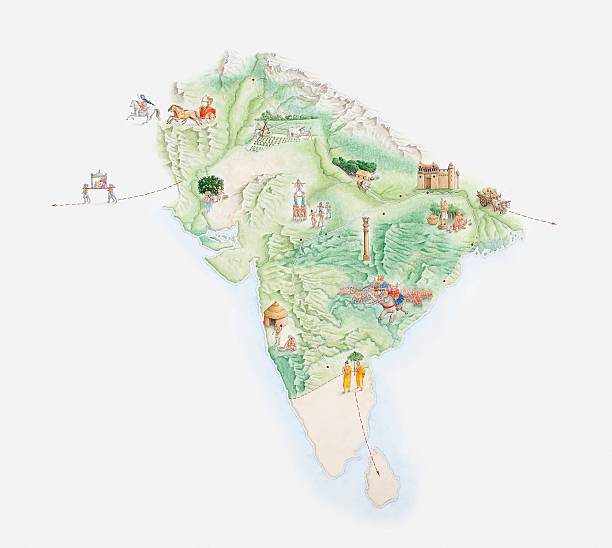The Great Empires of India: From Maurya to Mughal
The Maurya Empire (322-185 BCE) was the first major historical Indian empire, and definitely the largest one created by an Indian dynasty. The empire arose as a consequence of state consolidation in northern India, which led to one state, Magadha, in today’s Bihar, dominating the Ganges plain. The empire was founded by Chandragupta Maurya, who overthrew the Nanda Empire with the help of his minister Chanakya, the author of the Arthashastra, a treatise on statecraft and politics. The empire expanded rapidly under Chandragupta and his successors, especially Ashoka, who is famous for his edicts promoting Buddhism and peace. The empire reached its peak under Ashoka, who controlled most of South Asia except the southernmost parts. The empire declined after Ashoka's death and was eventually overthrown by the Shunga dynasty in 185 BCE.
The Gupta Empire (320-550 CE) is considered the golden age of classical Indian culture, as it witnessed a flourishing of art, literature, science, mathematics, astronomy, and philosophy. The empire was founded by Chandragupta I, who consolidated his power by marrying a princess of the Licchavi clan, a powerful confederation in the north. The empire reached its zenith under his grandson, Chandragupta II, who defeated the Shaka invaders and extended his rule over most of northern and central India. The empire is known for its patronage of scholars such as Kalidasa, Aryabhata, Varahamihira, and Vishnu Sharma. The empire also built many temples, monuments, and universities, such as the Nalanda and Vikramashila. The empire gradually declined due to internal strife, invasions by the Huns, and the rise of regional powers.
The Chola Empire (850-1279 CE) was a naval empire that dominated the south of India and parts of Southeast Asia. The empire was founded by Vijayalaya, who conquered the Pallava kingdom and established his capital at Thanjavur. The empire reached its peak under Rajaraja I and his son Rajendra I, who launched naval expeditions to Sri Lanka, Maldives, Indonesia, Malaysia, and Thailand. The empire is known for its temple architecture, bronze sculpture, literature, and administration. The empire also had a well-developed navy, trade, and agriculture. The empire declined due to internal conflicts, invasions by the Pandyas and the Muslims, and the emergence of the Vijayanagara Empire.
The Mughal Empire (1526-1857 CE) was the last major empire that ruled over most of India. The empire was founded by Babur, a descendant of Timur and Genghis Khan, who defeated the Delhi Sultanate at the Battle of Panipat in 1526. The empire reached its height under Akbar, who consolidated his power by expanding his territory, promoting religious tolerance, and fostering a rich culture. The empire is known for its architecture, such as the Taj Mahal, the Red Fort, and the Fatehpur Sikri, its art, such as the miniature paintings and the Mughal carpets, its literature, such as the Akbarnama and the Ain-i-Akbari, and its music, such as the Hindustani classical music and the Qawwali. The empire declined due to Aurangzeb's intolerance, corruption, rebellions, invasions by the Marathas and the Sikhs, and the interference of the British.







Comments
Post a Comment